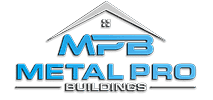What’s one of the biggest obstacles for energy-efficiency projects in homes and commercial buildings alike? In 2022, a survey found that the biggest barrier for commercial properties is a lack of funding, while homeowners may likely be in the same boat.
Homeowners aren’t necessarily sold on the tangible savings they’ll experience on their energy bills after an energy-efficiency retrofit – whether it be new windows, Energy Star appliances, or geothermal heating – and that’s also an obstacle to getting them to actually go through with the projects.

The Local Improvement Charge, Or LIC
Municipalities across Canada – including Ontario, having been pioneered in our very own Yukon – have started using something called a local improvement charge, or LIC.
This is used when the city must pay for something that only benefits a few people in one area – such as new playground equipment in one park. The city pays, but the cost is divided amongst all of the nearby property owners who will be benefiting from the item, paid through their property tax bills over a number of years.
This same tool is being used for energy-efficiency retrofits in homes and buildings, where the property owner pays back the cost, as initially loaned by the municipality, over a number of years through their property taxes. This began in the 2020 in Canada for residential properties, under the name Property Assessed Clean Energy, or PACE.
Now, 22 different municipalities in Ontario have created CHEERIO, or Collaboration on Home Energy Efficiency Retrofits in Ontario, doing their research to see if it can create a similar program here. Toronto’s city manager has recommended the use of LICs in residential properties to begin this fall, and the program will be fully considered on July 16th.
If passed, about 1,000 homes and 10 multi-unit buildings could participate.
Let’s Shop For Land Together!

Borrowing Rate
The ease of fundraising through these non-traditional loan providers might be an indication, inning accordance with Erik Gordon, a law teacher at the University of Michigan in Ann Arbor.
Whenever you see a huge distinction in between the terms on which you can raise cash in one market versus another market, something is incorrect in a minimum of among those markets, Gordon stated. It typically is the marketplace with the least-experienced gamers, and they typically wind up wanting they hadn’t played.
Sifakis stated he’s obtaining a loan at a yearly rate of 14 percent over 2 and a half years. He keeps all the earnings he makes from offering houses, he stated.
Crofton, Maryland-based Caruso Homes Inc. utilized RealtyShares to construct brand-new homes in Raleigh, North Carolina, and Washington, D.C. Wall Street isn’t really as thinking about funding single-family advancements in smaller-sized and medium-sized offers, making crowdfunding a much better method to money Caruso’s tasks, stated Chief Financial Officer Jack Haese.Few Defaults
Few Defaults
The business remains in the early phases. Spot of Land stated it comes from more than $180 million in loans, RealtyShares stated its raised more than $200 million in genuine estate offers and PeerStreet stated its moneyed more than $100 million. LendingHome won’t state just how much it produced– the business began crowdfunding just this year. Those overalls are peanuts compared with platforms like Lending Club.
Jeff Bullian, a Boston-based specialist, has actually bought about 30 offers on RealtyShares and in a handful of others on sites such as Patch of Land. Far, just one offer has actually gone bad, he stated. Because of circumstances, the platform, which Bullian decreased to determine, went to bat for financiers so everybody might get their cash back in addition to a little return.
Bullian stated he contributes approximately $10,000 in each offer for returns of about 10 percent to 20 percent, much like exactly what he was obtaining from a market lending institution.
I truly like the threat profile of property offers compared to some other financial investments due to the fact that they are protected, Bullian stated. You have the property to fall back on if something goes bad.
Income Requirement
U.S. Securities and Exchange Commission guidelines need financiers to be certified, or fulfill conditions such as yearly earnings of a minimum of $200,000 or a net worth of $1 million. People generally put in a minimum of $1,000 to $5,000 and are guaranteed interest-only payments monthly, with the rest of their refund at the end of the loan term. Some register in automated choices that buy a range of offers for diversity.
Through RealtyShares, financiers can raise various sort of financial obligation and equity. The business finances every offering and validates, inning accordance with CEO Nav Athwal. Of the potential tasks given the business, just about 3 percent are chosen to be noted, he stated.
LendingHome keeps bank loans in a bankruptcy-remote entity so the financial obligation and payment streams are insulated from anything that might take place to the company. The business had formerly just provided loans to institutional financiers, inning accordance with CEO Matt Humphries.Bankruptcy Remote.
Bankruptcy Remote
Patch of Land likewise keeps loans in a bankruptcy-remote entity. The business normally needs customers to offer individual assurances and to put a minimum of 20 percent of their own loan into offers, inning accordance with AdaPia Derrico, the chief marketing officer.
Sifakis, the Florida flipper, stated he usually gets a $3 million credit line from a financial investment company for about every $1 million he raises on RealtyShares, offering him included purchasing power.
Its the best thing on the planet, Sifakis stated. The quantity of loans you can raise isn’t really restricted by anything however their financier base. And the financier base is growing and growing.

